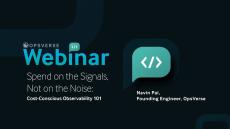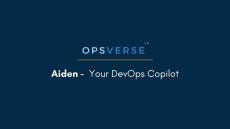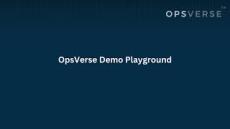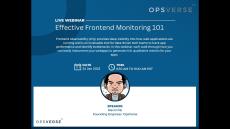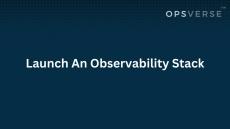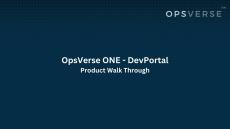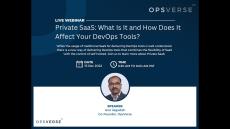|
By Divyarthini Rajender
When it comes to monitoring, diagnosing, and optimizing the performance of complex systems today, you can’t really go wrong with tracing tools. And while OpenTelemetry has become the go-to choice for instrumenting apps and collecting traces, there are several other options in the backend that can effectively store, manage, and analyze traces sent by OpenTelemetry. Two of these open-source tools are Jaeger and Grafana Tempo. In this article, we’ll compare and contrast the two.
|
By Divyarthini Rajender
With the increasing complexity of modern applications, log management solutions have become synonymous with troubleshooting, monitoring, and ensuring application reliability. Moreover, choosing the right tools can significantly impact your application’s performance, efficiency, and overall operational costs. Two powerful tools that often come up in these discussions are Grafana Loki and the ELK Stack (consisting of Elasticsearch, Logstash, and Kibana).
|
By Divyarthini Rajender
For any digital business today, keeping applications running smoothly and efficiently is a no-brainer. Application Performance Monitoring (APM) is an invaluable process in that regard, helping teams track the performance and health of their software applications. APM involves the use of tools and practices to detect, diagnose, and resolve performance issues in real-time, thereby ensuring optimal user experiences.
|
By Divyarthini Rajender
ObserveNow, the leading open source-based observability stack, has recently enhanced its capabilities with the introduction of Span Filtering – a key feature in its latest upgrade to Grafana 10.4. This advancement significantly improves the platform’s ability to dissect and analyze traces, which are crucial for understanding the behavior and performance of distributed systems.
|
By Divyarthini Rajender
There’s no doubt about it: Internal Developer Portals (IDPs) are transforming the way organizations manage their development processes. Gartner defines an IDP as a tool designed to facilitate self-service discovery, automation, and access to various resources within modern software development environments. IDPs are bound to become the backbone of many engineering teams today, and the essential features that engineers seek in an IDP can significantly impact its overall effectiveness.
|
By Shivtej Narake
Implementing a consistent and reliable alerting system across a sprawling organization is a significant challenge for just about any engineering team. For example, diverse infrastructures across different teams and numerous team-specific customizations may not translate well when investigating specific incidents. Inconsistent alerting practices can eventually lead to fatigue, leading to triggering of alerts that may not be relevant or actionable.
|
By Divyarthini Rajender
Many of our customers frequently ask us how they can calculate the ROI of their observability platforms. It’s a tough question, and one that comes up because company decision-makers often feel like they may be overpaying for observability when things are running smoothly – especially when it comes to their applications.
|
By Divyarthini Rajender
Every action, transaction, and interaction in an application generates some sort of data. ThisAnd this data holds a wealth of information that, when collected and analyzed over a period of time, provides a comprehensive view of application behavior and performance. Logging is the most widely used technique for collecting data on application states, transactions, errors, and code flow tracking.
|
By Divyarthini Rajender
Almost everyone acknowledges that log monitoring is essential for maintaining the reliability, security, and performance of modern applications. However, the complexities increase as organizations adopt diverse architectures to effectively manage the various log data challenges they encounter. In our previous blog post, we discussed the significance of log monitoring alongside a few popular log monitoring tools available in the market today.
|
By Divyarthini Rajender
In its simplest terms, log monitoring is the process of systematically collecting, storing, analyzing, and alerting on log data generated by various systems, applications, and devices within a DevOps environment. Logs are essentially records of events, transactions, and activities that occur within these systems. They can contain valuable information about system errors, performance metrics, user activities, and security events.
|
By OpsVerse
Spend on the Signals, Not on the Noise: Cost-Conscious Observability 101: Smartly optimize your observability costs, potentially lowering them to account for less than 20% of your total cloud costs. Learn practical and proven strategies from Navin Pai, Founding Engineer at OpsVerse.
|
By OpsVerse
Use OpsVerse's DevOps Copilot, Aiden, to generate an end-to-end CI/CD pipeline from scratch. Aiden brings the power of generative AI and LLMs to DevOps.
|
By OpsVerse
Introducing Aiden, your DevOps Copilot! We harness the power of generative AI to bring the ChatGPT of DevOps. Aiden, the AI DevOps Engineer, is your trusted DevOps teammate who understands your entire DevOps tool chain and can help you with anything DevOps.
|
By OpsVerse
Frontend observability (o11y) provides deep visibility into how web applications are running, and is an invaluable tool for data-driven tech teams to track app performance and identify bottlenecks. In this webinar, we'll walk through how you can easily instrument your webapps to generate rich, qualitative metrics for your apps.
|
By OpsVerse
OpsVerse - Launch An Observability Stack in a few easy steps. Run a full stack observability solution within minutes on OpsVerse.
|
By OpsVerse
OpsVerse ONE DevPortal based on the open-source Backstage.io. Bring all your tools into one interface. Use 80+ plugins to integrate your tools.
|
By OpsVerse
While the usage of traditional SaaS for delivering DevOps tools is well understood, there is a new way of delivering DevOps tools that combines the flexibility of SaaS with the control of self-hosted. Join us to learn more about Private SaaS.
|
By OpsVerse
Instrumenting your apps to emit traces make them highly observable. Before the OpenTelemetry Operator for Kubernetes, we achieved quasi-auto instrumentation by pulling in client libraries for our specific programming languages into our code. This webinar will demonstrate how the OpenTelemetry Operator enables auto-instrumentation of the app - without manually changing the code!
- August 2024 (1)
- July 2024 (2)
- June 2024 (3)
- May 2024 (5)
- April 2024 (2)
- March 2024 (2)
- April 2023 (2)
- February 2023 (1)
- January 2023 (2)
- December 2022 (3)
OpsVerse brings your DevOps back into balance. All of the control of open source tools – with none of the headaches.
Empowering software companies to focus on their products, not on complicated tools and infrastructure:
- The best of open-source, simplified: OpsVerse offers you a curated collection of powerful, open-source DevOps tools, delivering uncompromising flexibility without the costly preoccupation of managing your toolchain.
- Build more. Waste less: The OpsVerse suite is fully-managed to reduce DevOps complexity, freeing up to 45% of your engineers’ time. We enable teams to focus on product building rather than juggling DevOps tools.
- Full control over data residency: With OpsVerse, you have unparalleled flexibility to run your DevOps tools in any environment. Choose between the cloud, private SaaS, or self-hosting to support your compliance and regulatory needs.
- Get started in minutes, not months: Since OpsVerse is fully-managed, your teams can begin using OpsVerse the same day you sign up. Turn months of setup into operational readiness within a matter of minutes.
- Instantly simplify DevOps complexity: Aiden by OpsVerse is your intelligent DevOps CoPilot, using GenAI to automate operations, enhance productivity, and provide precise, actionable insights across your entire toolchain.
Unlock the power with OpsVerse.












